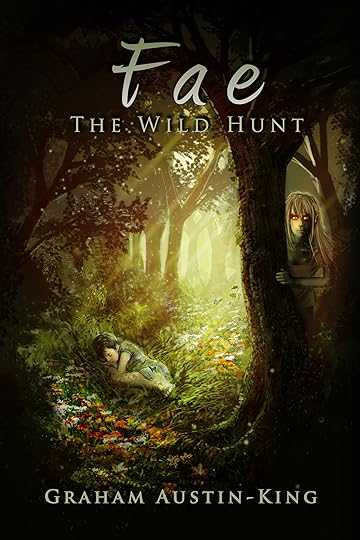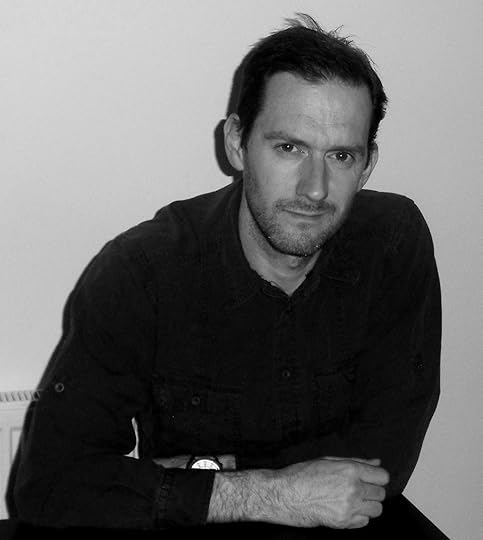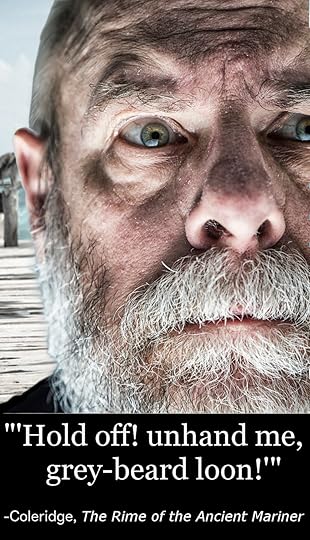Jennifer Julander's Blog, page 3
June 20, 2017
Interview with Graham Austin-King, Author of FAE: THE DARK HUNT
Dark fantasy has been on my reading list lately, and I was reading at the coffee shop the other day when someone asked why they always see me there.
“I’m a novelist,” I replied. “Sometimes this is my office, especially when I need to focus on my work.”
“Wow! I’ve never known an author before!”
I hear this all the time. I usually laugh a little in response, because I know lots of authors. (The byproduct of working in the writing world, I suppose).
Part of the reason I know so many writers is that the process of writing, editing, and publishing fascinate me. I love discussing the thought process behind story development, the inspiration authors draw from the surrounding world, and what leads to the completion of a compelling story.
As a preview to the dark fantasy book reviews I’m writing, I’m also posting a couple of mini-interviews. Up first is Graham Austin-King, author of Fae-The Wild Hunt. Next is Dimitri Iatrou, author of Damastor, which I’m currently reading. I’ll be adding his interview in another post very soon.
But first, a quick mention:

Author Ivy Logan is posting a review of Green Lady, coming later this month. Take a look at her blog for details, and make sure to subscribe so you don’t miss it!
(See the subscribe button in the bottom right corner of the blog).
Get my free update
Next, meet indie author Graham Austin-King, who “was born in the south of England and weaned on broken swords and half-forgotten spells… [his] very patient wife can arguably say her husband is away with the faeries.”
I just finished reading his dark fantasy novel, Fae-The Wild Hunt, and I was curious about the development of the story.
JJ: “What was your biggest inspiration for the first Fae novel? How does the initial concept/draft vary from the final product?”
G: “I’d wanted to do something about faeries and fae for a while. The initial idea I suppose came from a Raymond E Feist book called Faerie Tale. I haven’t read the book, but it deals with the notion of evil faeries in [the] modern day. That notion of evil, or rather non-saccharine-coated, Disney-feid faeries kind of took root and I started looking around. It’s not a new idea, faeries were genuinely feared during the middle ages and are the root of the [tradition of] nailing of a horseshoe to your door for good luck—it was simply the cheapest piece of iron around.


“Fae—The Wild Hunt was my first book and I learned a lot during the process. I didn’t do many drafts and if I had my time again I probably wouldn’t have left it with a cliffhanger ending. Thankfully the whole trilogy is complete now, so it’s easy to move beyond that.
“I don’t really plot stories out, I’d rather they take me where they want to [go]. The Riven Wyrde Saga took me to a place I’d never thought of when I started writing Fae—the Wild Hunt, but then, that’s all part of the fun.”
JJ: “If this story took place on Earth, which time period would it resemble the closest? (For example, some technology is mentioned, such as early clocks).”
G: “It’s hard to put a time period into it. Probably around the 13th or 14th Centuries, but without gunpowder.”
JJ: “If you were living in this realm, what would you do there? (Would you have a certain profession, or would you be involved in the story’s main events?) Do you take after a certain character the most, or does a certain character take after you?”
G: “If I had any knowledge of what was coming, I think I’d take up smithing and keep myself surrounded by iron all day long! I don’t think I put myself into the books, but my wife is fairly obviously present in Selena.”
For the record, the “cliffhanger ending” was perfectly crafted. It wasn’t the kind of ending that makes you frustrated, but the kind that makes you want to read the sequel. (Authors sometimes question their storytelling choices after the fact, but in this case, it’s good that Mr. Austin-King went with his gut).
Huge thanks to Mr. Austin-King for this inside look at the dark fantasy novel, Fae-The Wild Hunt. You can read more about my impressions of the book in my review, coming soon. The Riven Wyrde Saga is available on his website.
Update: Graham Austin-King’s newest novel, The Lore of Prometheus, was released in 2018 and is free on Kindle Unlimited for a limited time.

The post Interview with Graham Austin-King, Author of FAE: THE DARK HUNT appeared first on Jennifer Julander.
Coming Soon: Dark Fantasy Reviews, Green Lady Feature
Dark fantasy has been on my reading list lately, and I was reading at the coffee shop the other day when someone asked why they always see me there.
“I’m a novelist,” I replied. “Sometimes this is my office, especially when I need to focus on my work.”
“Wow! I’ve never known an author before!”
I hear this all the time. I usually laugh a little in response, because I know lots of authors. (The byproduct of working in the writing world, I suppose).
Part of the reason I know so many writers is that the process of writing, editing, and publishing fascinate me. I love discussing the thought process behind story development, the inspiration authors draw from the surrounding world, and what leads to the completion of a compelling story.
As a preview to the dark fantasy book reviews I’m writing, I’m also posting a couple of mini-interviews. Up first is Graham Austin-King, author of Fae-The Wild Hunt. Next is Dimitri Iatrou, author of Damastor, which I’m currently reading. I’ll be adding his interview in another post very soon.
But first, a quick mention:

Author Ivy Logan is posting a review of Green Lady, coming later this month. Take a look at her blog for details, and make sure to subscribe so you don’t miss it!
(See the subscribe button in the bottom right corner of the blog).
Get my free update
Next, meet indie author Graham Austin-King, who “was born in the south of England and weaned on broken swords and half-forgotten spells… [his] very patient wife can arguably say her husband is away with the faeries.”
I just finished reading his dark fantasy novel, Fae-The Wild Hunt, and I was curious about the development of the story.
JJ: “What was your biggest inspiration for the first Fae novel? How does the initial concept/draft vary from the final product?”
G: “I’d wanted to do something about faeries and fae for a while. The initial idea I suppose came from a Raymond E Feist book called Faerie Tale. I haven’t read the book, but it deals with the notion of evil faeries in [the] modern day. That notion of evil, or rather non-saccharine-coated, Disney-feid faeries kind of took root and I started looking around. It’s not a new idea, faeries were genuinely feared during the middle ages and are the root of the [tradition of] nailing of a horseshoe to your door for good luck—it was simply the cheapest piece of iron around.


“Fae—The Wild Hunt was my first book and I learned a lot during the process. I didn’t do many drafts and if I had my time again I probably wouldn’t have left it with a cliffhanger ending. Thankfully the whole trilogy is complete now, so it’s easy to move beyond that.
“I don’t really plot stories out, I’d rather they take me where they want to [go]. The Riven Wyrde Saga took me to a place I’d never thought of when I started writing Fae—the Wild Hunt, but then, that’s all part of the fun.”
JJ: “If this story took place on Earth, which time period would it resemble the closest? (For example, some technology is mentioned, such as early clocks).”
G: “It’s hard to put a time period into it. Probably around the 13th or 14th Centuries, but without gunpowder.”
JJ: “If you were living in this realm, what would you do there? (Would you have a certain profession, or would you be involved in the story’s main events?) Do you take after a certain character the most, or does a certain character take after you?”
G: “If I had any knowledge of what was coming, I think I’d take up smithing and keep myself surrounded by iron all day long! I don’t think I put myself into the books, but my wife is fairly obviously present in Selena.”
For the record, the “cliffhanger ending” was perfectly crafted. It wasn’t the kind of ending that makes you frustrated, but the kind that makes you want to read the sequel. (Authors sometimes question their storytelling choices after the fact, but in this case, it’s good that Mr. Austin-King went with his gut).
Don't forget!
Invite your friends to follow JJ’s blog & get extra entries to the drawing to win free books for 1 year on July 31, 2017.
For each friend that accepts your invite, you’ll receive 1 extra entry to the drawing.
Increase My Chances to Win!
Huge thanks to Mr. Austin-King for this inside look at the dark fantasy novel, Fae-The Wild Hunt. You can read more about my impressions of the book in my review, coming soon. The Riven Wyrde Saga is available on his website, and his novel, Faithless, is currently free on Kindle Unlimited.

The post Coming Soon: Dark Fantasy Reviews, Green Lady Feature appeared first on Jennifer Julander.
May 9, 2017
Book Review: Post-Apocalyptic Romance Novel, Autumn in the City of Angels
This 2013 post-apocalyptic romance will have your heart aching for the heroine and the tragic hero.
What drew me to the novel:
Call me crazy, but I’d never actually read a post-apocalyptic romance before this one. Soon after picking up Autumn in the City of Angels, I learned that Kirby Howell is not one person, but two, with writing as artfully woven as Grey’s wool sweater —a character who, you’ll soon find out, is entirely captivating.
Plot Synopsis :
Autumn is the only child of an architect and a famous actress. Her charmed life fades into a surreal existence when a Plague decimates the population. Don’t be fooled by the “typical” plot. This post-apocalyptic romance follows a steamy (but not explicit) arc that will keep your heart thudding with emotion.
The first time she ventures out of her apartment after the Plague, our heroine lands herself into trouble. Just when it seems like she’s doomed, a great-smelling guy swoops to her rescue. He comforts her with such tenderness that even a skeptical reader immediately falls in love. The tension between them is apparent from the start, and that’s when I realized I was reading a true post-apocalyptic romance, something that takes elemental genres to a whole new level.
After the “mystery-man” disappears, hints of his visits tease the reader into wondering about him just as much as Autumn does.
Soon, the heroine finds herself on a mission to save her post-apocalyptic romance and the city of Los Angeles. The winding plot and interesting turns kept my heart pounding through most of the novel. Just when you think things are wrapping up nicely, another breathtaking reveal surprises you.


First impressions:
Overall, this book kept me up late at night and had me wishing for longer lunch breaks at work. It took me a second to get reeled in by Autumn in the City of Angels, but the moment Autumn’s friend, Sarah, entered the story, I was completely engaged. The characters’ wit kicked in, the pace picked up, and I couldn’t put it down.
Looking back, the author in me wishes for some sort of tie in with the old man on the pier in Chapter 1. It’d be awesome if he shows up later in the series as a kickass cavalier, a lunatic sailor, or a weird soothsayer. The imagery in this pre-doomsday scene reminded me a bit of The Rime of the Ancient Mariner : dead sea bird, dramatic narration, oceanside setting… Even though I wasn’t yet enthralled with the novel (how little did I know), I felt the descriptions here were excellent precursors to the apocalypse, tempered with human elements and a healthy skepticism we can all relate to.
Biggest love for novel :
The best part of this book was the way the plot drives forward. There isn’t a dull moment. Autumn’s wit and humor are evident even in her loneliness after the Plague sweeps through Los Angeles.
I also love the way this post-apocalyptic romance portrays an eerie sense of calm. Instead of fighting for her life every day, Autumn has a few chance encounters with danger but mostly lives above the turmoil in the streets, catching glimpses of violence with a disconnected sense of shock.
This novel is also well-researched. Some of the descriptions piqued my interest by providing unique interpretations of society after the apocalypse and a great local perspective. For example, even after the water stops running in Autumn’s apartment, the electricity still works. It’s later explained that this is due to their proximity to the Hoover Dam. #GoGreen, USA.



It’s strange to read an end-of-days story that isn’t bent on the pulse of survive, survive, survive. It was an effective strategy in making the reader feel the surreal nature of Autumn’s circumstances.
Biggest criticism for novel:
The truth about Grey came as a huge shock, and for a little while, it felt like a stretch. Maybe it’s because the real explanation didn’t quite jive with my suspicions. However, the authors did a great job of taking me on Autumn’s journey in becoming a believer, and soon I realized exactly why the twist came as such a surprise.

When Grey first came into the story, I perceived him as this awesome ninja-survivor. But I was so swept away by the combination of seeing Autumn slip into an action role, the wonderful descriptions, and the gratification of finally watching this post-apocalyptic romance unfold that I eventually stopped analyzing everything.
Just hold your KindleTM lovingly. Don’t throw it across the room when Kirby Howell rocks the very foundation of this book.


I highly recommend Autumn in the City of Angels to readers who enjoy the following:
Dystopian or post-apocalyptic novels
Heart-throb romances
Mystery plots
Tragic heroes
Unique plot turns
Characters with Gaelic heritage
Have you read Autumn in the City of Angels? Do you have a post-apocalyptic romance novel to recommend? Tell us in the comments below.
The post Book Review: Post-Apocalyptic Romance Novel, Autumn in the City of Angels appeared first on Jennifer Julander.
March 7, 2017
7 Parent Entrepreneur Steps to Success

At some point, every parent entrepreneur has wondered if building a successful business is worth the countless hours, endless research, and sleepless nights it can take to get everything into place. Many have probably wondered if it’s even possible. These Pro Tips can help any parent entrepreneur balance a side business with parenting, while still working and parenting full time, too. (After all, you have to get there somehow).
1. Schedule Like It’s Your Job
Because it really is your job. If you want to find work-family balance, but you also want to build a solid foundation for your company’s success, you have to treat your business like your day job. Schedule yourself to work on business needs. Then, hold yourself to it as if you’d get fired for missing work.
The reality is, a rigorous (but reasonable) schedule will keep you from getting “fired” from your own company, courtesy of you, yourself. Use time prioritization strategies, like a 15-Min Planner, to ensure your time is well-spent. Make sure to schedule time for all your priorities, including work, cleaning, and family.

2. Get Help
If it takes a village to raise a child, imagine what it takes to build a business. At some point, you may have to acknowledge that you need help balancing life as a parent entrepreneur. Ask someone in your family or at church to babysit for a couple of hours. Hide out in your home office, a nearby coffee shop, or a local library with your phone on Do Not Disturb. Tell your family to call twice in a row if there’s an emergency.
For many parents, the stark reality is a sheer lack of time. If you don’t have a parent or a reasonably priced babysitter, and especially if you have young children, take advantage of anywhere you can spend some time taking care of business needs while your kids are self-occupied (e.g., your backyard with the sprinklers on, fast food PlayPlaces where the kids are confined, or even your best friend’s house).
Sometimes, it just comes down to the fact that keeping up with life as an entrepreneur parent is like having 3 full-time jobs at once. You may feel it’s necessary to hire someone, even before you’ve made revenue, and that’s okay. If you find yourself spending hours researching to learn new skills, it may be worth the expense to get some help. Set a budget and start looking for college students who want to intern. If you already have a business license and a brand name, you’re ready to hire, whether the help is temporary or permanent.

3. Goals Aren’t Written in Stone
The purpose of creating goals and strategies is so you’ll have a plan of action, a direction for your efforts, and a way to measure progress. So don’t beat yourself up if you miss a deadline or fall short of a goal. It’s easy to think you might’ve missed your goal because you just didn’t try hard enough. In reality, this may be a sign that your last goal needed adjustment, or perhaps you focused on the wrong priority. Just set a new goal with the realization that you’re learning every day.
Besides, give yourself a break. You’re sleep-deprived, your head is full of kid songs, and your house is probably a mess. It’s not the end of the world, and it doesn’t mean you won’t succeed.
[image error]
4. Wake Up Early or Stay Up Late
Take advantage of the quiet hours. I know you want that extra nap when the baby’s sleeping, but unless he’s under 6 months old, that nap isn’t justified in the face of balancing your side business with parenting needs. Instead, make a trade-off with your partner: if you can reach X business goal by Y date, you get to sleep in for an entire weekend.
Yes, it’ll mean less sleep and more willpower. But if you’re a parent entrepreneur who’s you’re truly passionate and dedicated your business, you have it in you. Though to clarify—getting too little sleep won’t help you in the long run, especially because kids make parents even more tired than other adults. The flip side of this is to go to bed when your children do. Then, if they wake up in the middle of the night, you aren’t losing as much sleep. This helps you get up early so you can start out the day with a sense of accomplishment.

5. Take a Break
Everyone needs a break, even the most accomplished entrepreneurs. If the combination of MomLife/DadLife + Side Business = 
 , it might be time to back off a little. If you’re stressing, not sleeping, your current agenda doesn’t come naturally, and you’re not on a critical, all-or-nothing deadline, don’t force it.
, it might be time to back off a little. If you’re stressing, not sleeping, your current agenda doesn’t come naturally, and you’re not on a critical, all-or-nothing deadline, don’t force it.
Take some “Me” time. Go sit in a hot tub. Take a walk. Do something new with your family or go on vacation. Just generally fill your cup; after you recuperate, you’ll be ready to tackle the demands of running a business.
If you still find yourself lagging when your break is done, try a few strategies to inspire yourself:
Watch a motivational video, like a TED Talk
Have a conversation with someone uplifting
Get a quick workout into your schedule–more oxygen to your brain!
Do a short activity you find soothing, like making a cup of tea or taking a shower

6. Plan a Business Retreat
I know, a little lackluster. Us parent entrepreneurs don’t get enough time off, especially for those of us with a full-time job on top of everything else. So taking a business retreat might seem like the last thing you want to do, but don’t underestimate the power of taking a day or several days to focus on what needs to get done.
First things first—plan ahead.
Make a list of critical business needs and a plan to tackle each one efficiently.
Draw up an hourly schedule to keep your goals reasonable.
If you haven’t already measured your speed in accomplishing necessary tasks, take some time to get a realistic idea of how quickly you work.
Most beginning entrepreneurs don’t have money to book a hotel room for a weekend business retreat. If you do—great. You’ll limit your distractions tremendously if you lock yourself in a hotel room for the weekend, but you may also find yourself becoming depressed or losing steam halfway through (trust me, I’ve done this. It isn’t easy, even if you’re happy-go-lucky like me).
Retreats don’t have to cost money—go to the library with a homemade lunch (eat it outside of the library, you don’t want to be that guy) and use the quiet environment to hone your focus. And if you’re a fiction lover like me, sit in the non-fiction area, where you’re less likely to be distracted.
Alternatively, there are options for renting temporary office space that doesn’t cost an arm and a leg. Try the Regus App. For a few dollars a day, you can take some much-needed time, use free WiFi, and enjoy a quiet space to focus on your side business.

7. Focus on Your Kids
If you feel your kids are constantly interrupting your work, it might be time to put down the laptop and play. They know you’re stressed, and they don’t understand why you’ve been gone from home or why you can’t pay attention to them constantly. In fact, knowing kids, they may even act out on purpose to get your attention, even if they have plenty of love and attention from other family members. After all, you’re their parent. They love you SO much.
So, take them out to a park for a couple hours. Trust me, if your business plan can’t handle a 2-hour break, then you can’t handle your business. When you come home, the kids will be much calmer & they won’t act out for attention as much.
And remember: You can always find time for your side business, but it’s harder to make up for time lost with your kids. After all, they don’t stay small forever.

The post 7 Parent Entrepreneur Steps to Success appeared first on Jennifer Julander.
Inside Look at the Story Development of GREEN LADY
Reminiscing about the story development of a novel that’s close to her heart, author Jennifer Julander delves into the first moments of Green Lady, which began as a daydream nearly 15 years ago.
“The forest was full of sunlight. She reveled in the tall pine columns and oak shade. How could anyone feel ill at ease in the living wood, under the star-speckle shade of leaves?”
—Green Lady, Chapter 1
How the Story Began
Green Lady‘s story development was the product of a young girl’s homesickness and her inherent love for literature.
A 12-year-old Jennifer Julander sat in her seventh-grade Pre-Algebra class, day-dreaming and writing in her notebook as she often did. She was a good student and kept good grades, yet time and again her imagination took hold.
Her light brown hair swept in a frizzy mess down her back. Red, round glasses framed her green eyes.
Her wooden, metal school desk sat in the row closest to the classroom’s only large window giving her a good view of the outside.
The sun was high in the sky and the school day was still early. Even so, Jennifer wasn’t in the brightest of moods. She wasn’t particularly excited about living in her new home. After all, this was her first autumn in Utah and she missed the trees of Georgia.
“Mom just had to move us to the desert,” Jennifer thought. The lack of trees was unnerving. Instead of staring out the window, she looked down at her green Compositions notebook, the cover decorated with frogs and lily pads.
Frogs had frequented her backyard in Georgia, swarming around the swimming pool, their croaks an evening chorus she’d never forget. Suddenly, her trees of Georgia didn’t seem so far away. She was transported back to the woods, immersed in a magical forest of her own imagination…

What started as a short story…
“Instead of taking notes, I decided to write a short story,” Jennifer said.
Little did she know, this was just the beginning of the story development of her first novel. Green Lady became a project she’d return to again and again for years to come.
As an adult, wife, marketing professional, and mother of two young boys, she’s months away from the publication her debut novel, Green Lady. What started as a handwritten notebook has become a young-adult fantasy novel.
This story is filled with themes of adventure, magic, romance and coming-of-age. Fifteen years after it began as a short story, Green Lady will be published on Earth Day, April, 22, 2017.
Now, Julander is 27 years old and wears her brown hair short. Glasses still frame her face, and her imagination still gets the better of her. Her muse is a combination of coffee, soundtracks, a leather-bound notebook, and the outdoors. (Some things never change). Story development, she says, is usually easier when the “ambiance encourages imagination.”
“It’s amazing that what I wrote at the age of 12 stayed in my mind this long and resurfaced in the rewrites I did a year ago,” Julander said. “If I turn back to that notebook, I’m often astonished by how much of it ended up in the final manuscript.”
Green Lady has gone through many changes and has evolved over the years just as she has. She’s grown up and so has her writing style. After years of diligent story development, the finished novel is 400+ pages, 102,000+ words long. It much more resembles the kind of story she would’ve wanted to read in high school.
Professional Development
During high school, Julander became serious about becoming a novelist. At the time of graduation, she’d rewritten Green Lady several times. She’d finished a completely hand-written, 300-page draft of the story. The last chapter was written to Mozart’s 45th Symphony, she said.
“I remember writing until my entire arm went numb, from my elbow to my little finger,” Julander said. She continued to pursue her writing throughout college, earning a Bachelor of Arts in English and Creative Writing at the University of Utah. Her first creative writing professor encouraged her to wait until after graduation to publish her book.
“She said my writing style would change throughout college, and she was right,” Julander said. By the time she graduated three years later, her writing style and expression had changed drastically.
“I realized I had to start from scratch,” she said.
She spent another five and a half years finalizing a completed draft of her novel. After that, she spent one more year immersed in rewrites, revisions, and editing.
Story development pays off in the end…
Green Lady is now available on Jennifer Julander’s website.
“It’s about time,” Julander said. “Story development and publishing are a rough road. Sometimes, you know what you’re meant to do in life but there isn’t much of a way to learn how, except by trial and error.”
Now, as an experienced writer and researcher, Julander knows what she’d do differently to speed up the process.
“But if you ask me whether I’d change anything, the answer is no,” Julander said. “Green Lady wouldn’t be what it is without the journey I took to reach the end, including moving from the heart of the forest to a desert climate.”
Order your copy of Green Lady here.
Several posts on Jennifer Julander’s blog discuss courses for writers. You can also find self-publishing advice (most of which she learned the hard way) & mistakes that are easy to make drafting your first novel.
Follow this blog to get sneak peeks into an author’s life, receive event and sequel updates, writing advice, reading recommendations, and enter contests for members only.
The post Inside Look at the Story Development of GREEN LADY appeared first on Jennifer Julander.
From Daydreamer to Author: An Inside Look at the Story Development of GREEN LADY
Exclusive: Reminiscing about the story development of a novel that’s close to her heart, author Jennifer Julander delves into the first moments of Green Lady, which began as a daydream nearly 15 years ago.
“The forest was full of sunlight. She reveled in the tall pine columns and oak shade. How could anyone feel ill at ease in the living wood, under the star-speckle shade of leaves?”
—Green Lady, Chapter 1
The story development of Green Lady was the product of a young girl’s homesickness and her inherent love for literature. A 12-year-old Jennifer Julander sat in her seventh-grade Pre-Algebra class day-dreaming and writing in her notebook as she often did. She was a good student and kept good grades, yet time and again her imagination would take hold. Her light brown hair swept in a frizzy mess down her back. Red, round glasses framed her green eyes. Her wooden, metal school desk sat in the row closest to the classroom’s only large window giving her a good view of the outside. The sun was high in the sky and the school day still early, but Jennifer wasn’t in the brightest of moods. She wasn’t particularly excited about living in her new home. This was her first autumn in Utah and she missed the trees of Georgia.
“Mom just had to move us to the desert,” Jennifer thought. The lack of trees was unnerving. Instead of staring out the window, she looked down at her green Composition notebook, the cover of which was decorated with frogs and lily pads. Frogs had frequented her backyard in Georgia, swarming around the swimming pool, their croaks an evening chorus she’d never forget. Suddenly, her trees of Georgia didn’t seem so far away. She was transported back to the woods, immersed in a magical forest of her own imagination.

“Instead of taking notes, I decided to write a story,” Jennifer Julander said.
Little did she know that this was just the beginning of the story development of her first novel, something she’d think about for years to come.
As an adult, wife, mother of two and a marketing professional, she’s months away from the publication her debut novel, Green Lady. What started as a handwritten notebook has come to fruition as a young-adult fantasy novel, filled with themes of adventure, magic, romance and coming-of-age. 15 years after it began as a short story, Green Lady will be published on Earth Day, April, 22, 2017.
Now, Julander is 27 years old and wears her brown hair short. Glasses still frame her face, and her imagination still gets the better of her. Her muse is a combination of coffee, epic soundtracks, a leather-bound notebook, and the outdoors, because some things never change. Story development, she says, is usually easier when the ambiance encourages imagination.
“It’s amazing that what I wrote at the age of 12 stayed in my mind this long and resurfaced in the rewrites I did a year ago,” Julander said. “If I turn back to that notebook, I’m often astonished by how much of it ended up in the final manuscript.”
Green Lady has gone through many changes and has evolved over the years just as she has. She’s grown up and so has her writing style. After years of diligent story development, the finished novel is 400+ pages, 102,000+ words long and much more resembles the kind of story she would’ve wanted to read in high school.
It was during high school that Julander truly got serious about becoming a novelist. At the time of graduation, she’d rewritten the book several times and finished a completely hand-written, 300-page draft of the story. The last chapter was originally written to Mozart’s 45th Symphony, she said.
“I remember writing until my entire arm went numb, from my elbow to my little finger,” Julander said. She continued to pursue her writing throughout college, earning a Bachelor of Arts in English and Creative Writing at the University of Utah. Her first creative writing professor encouraged her to wait until after graduation to publish her book.
“She said my writing style would change throughout college, and she was right,” Julander said. By the time she graduated 3 years later, her writing style and expression had changed drastically.
“I realized I had to start from scratch,” she said.
She spent another 5.5 years on finalizing a completed draft of her novel and 1 more year immersed in rewrites, revisions, and editing.
Green Lady is now available for pre-order on Jennifer Julander’s website.
“It’s about time,” Julander said. “Story development and publishing are a rough road when you know what you’re meant to do in life, but there isn’t much of a way to learn how, except by trial and error.”
Now, as an experienced writer and researcher, Julander knows what she’d do differently to speed up the process.
“But if you ask me whether I’d change anything, the answer is no,” Julander said. “Green Lady wouldn’t be what it is without the journey I took to reach the end, including moving from the heart of the forest to a desert climate.”
Pre-order your copy of Green Lady here.
There are several posts on Jennifer Julander’s blog that discuss courses for writers, self-publishing advice (most of which she learned the hard way), and mistakes that are easy to make drafting your first novel.
Follow this blog to get sneak peeks into an author’s life, receive event and sequel updates, writing advice, reading recommendations, and enter contests for members only.
The post From Daydreamer to Author: An Inside Look at the Story Development of GREEN LADY appeared first on Jennifer Julander.



